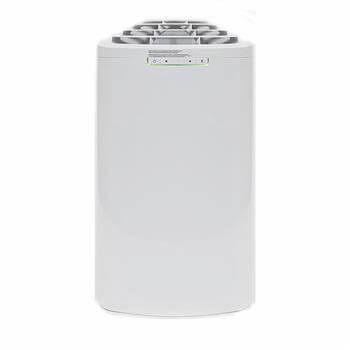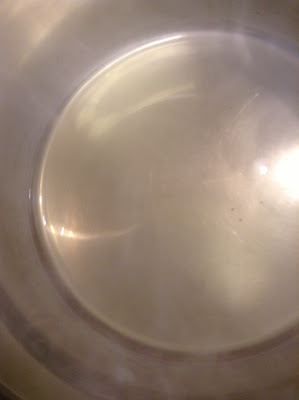The long and short of it is, there are 2 basic kinds of ice cream makers (not counting the old-fashioned kind that required rock salt and a front porch to churn on...): the kind with the cooler-lined cannister that you freeze, and the kind that has it's own cooling unit (condenser...sort of like your air conditioner) built right in.
Most ice cream recipe books will say that either is fine, and they're not wrong... mostly.
Here's the real scoop (ha ha! see what I did there?):
Cannister-type ice cream makers require you to freeze an inner liner, that looks like an ice bucket, until it's good and solid-- usually 24-48hrs before you use it. Then, the other part of the machine will turn the frozen cannister, and there will be a paddle-like scraper/agitator attachment that will turn, churn, and aerate the mix as it freezes. You usually can only use the cannister once, before you need to re-freeze it (I've tried making 2 batches in a row, and it didn't work in mine).
Some of these are stand alone models (Cuisinart makes a very trusty one) and some are sold as an attachment for your stand mixer (samples of each below).
I used a Cuisinart version for years, and it was ok. Good. Definitely better than trying to, say, freeze ice cube trays of cream and then blend them-- that's just nuts.
 |
| This is the newest model of the trusty Cuisinart ice cream/yogurt maker. Mine's a bit older but basically the same. |
So, the cannister style ice cream maker takes longer to freeze the ice cream (and you really need to start with VERY cold mix, so that you don't waste precious time of the cannister melting), and I found there to be a lot of inconsistency-- as you poured out a rather soupy soft-serve consistency ice cream, you would still have to really scrape the sides (risking scratching the "non-stick coating" on the surface) and there, the ice cream was rock hard. Mixing everything quickly in a container and throwing it in the freezer for several hours, you would get a pretty good product in the end. But I was stressed out and wanted the process to be easier and better.
After about 6 years of using my cannister-style, I invested last year in a not-too-expensive-if-you're-really-going-to-use-it-a-lot model of self-cooling ice cream maker. It got good reviews all over, and I'm really happy with it (it's does beep weirdly, but maybe mine just got bumped in transit... works fine though).
 |
| This is my current model. Whynter (and others) make bigger, more expensive models, but this one works just great. |
The difference for me is: I don't have to perfectly chill my ingredients first (I'm not putting hot liquid in it, but from-the-fridge-to-the-blender-to-the-machine works just fine); it also creates firmer ice cream right off the bat. I can stop it early, get the soupy soft-serve (which my husband actually likes...) or I can let it run longer, because there's no cannister that will melt and stop my progress. And, I can make as many batches as I want in a day, or day after day. Lastly, I don't have to give up precious room in my freezer for the cannister-- that room is MUCH better used by additional flavors of homemade ice cream!
So-- if you're just dabbing your toe in the ice cream pool (ooooooh... a pool of ice cream... with ice cream sandwiches as the floaties in the pool... yummmm), then by all means, pick up the cannister type, and see if you like making ice cream, if your family eats enough of it, and if it winds up on the yard sale table within a year or two.
If you're really committed, then I can definitely recommend you find yourself a model with a built in cooler (Whynter makes the above model and a bigger one, and Cuisinart makes a similarly priced model as well).
Happy Freezing!






























